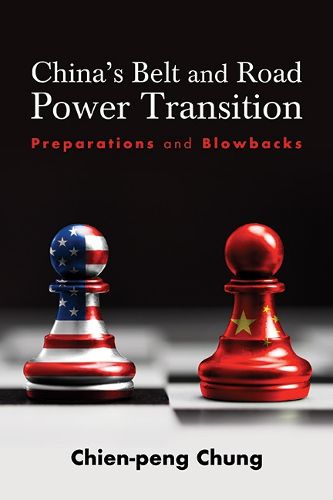Readings Newsletter
Become a Readings Member to make your shopping experience even easier.
Sign in or sign up for free!
You’re not far away from qualifying for FREE standard shipping within Australia
You’ve qualified for FREE standard shipping within Australia
The cart is loading…






Details the Belt and Road global infrastructure development initiative as the most important instrument for China's leadership under Xi Jinping to create an alternative global economic and geopolitical order to challenge the United States.
In the opening decades of the twenty-first century the Chinese Communist Party (CCP) leadership under Xi Jinping has created a worldwide Sino-centric network, the Belt and Road Initiative (BRI), to challenge American dominance in world affairs. Encompassing economic, financial, political, and strategic relations, the CCP's belief is that the funds, construction projects, and promises offered by the BRI will generate a widespread perception of the inexorability, legitimacy, and thus acceptability of a Chinese world order. Consisting initially of a land-based "Silk Road Economic Belt," an oceangoing "Maritime Silk Road," and the China-Pakistan Economic Corridor, the BRI has expanded to involve more than 140 countries and includes a Health Silk Road, Digital Silk Road, and Polar Silk Road, but it has also experienced serious challenges. Using power transition theory, Chien-peng Chung carefully investigates and evaluates the enterprise's benefits and shortcomings, concluding that it is still too early to consider the BRI a success.
$9.00 standard shipping within Australia
FREE standard shipping within Australia for orders over $100.00
Express & International shipping calculated at checkout
Details the Belt and Road global infrastructure development initiative as the most important instrument for China's leadership under Xi Jinping to create an alternative global economic and geopolitical order to challenge the United States.
In the opening decades of the twenty-first century the Chinese Communist Party (CCP) leadership under Xi Jinping has created a worldwide Sino-centric network, the Belt and Road Initiative (BRI), to challenge American dominance in world affairs. Encompassing economic, financial, political, and strategic relations, the CCP's belief is that the funds, construction projects, and promises offered by the BRI will generate a widespread perception of the inexorability, legitimacy, and thus acceptability of a Chinese world order. Consisting initially of a land-based "Silk Road Economic Belt," an oceangoing "Maritime Silk Road," and the China-Pakistan Economic Corridor, the BRI has expanded to involve more than 140 countries and includes a Health Silk Road, Digital Silk Road, and Polar Silk Road, but it has also experienced serious challenges. Using power transition theory, Chien-peng Chung carefully investigates and evaluates the enterprise's benefits and shortcomings, concluding that it is still too early to consider the BRI a success.